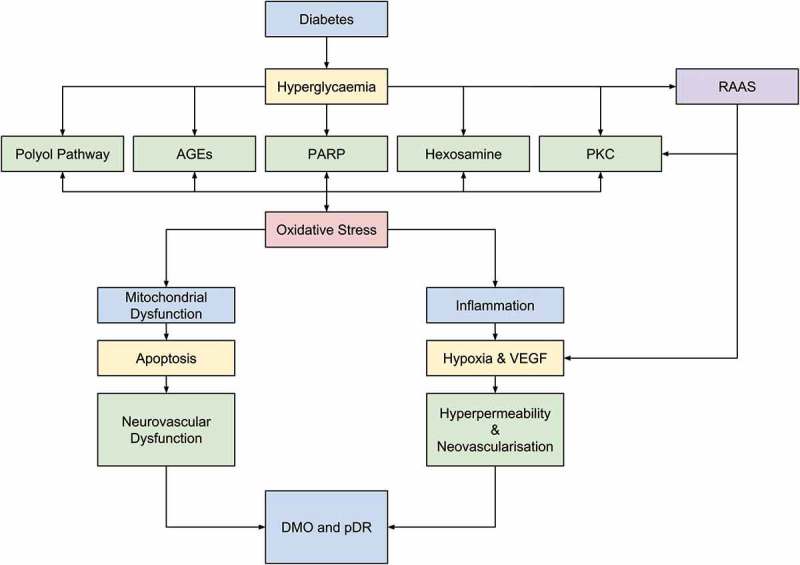Figure 1.

Diabetes leads to hyperglycemic episodes which in turn impacts five key biochemical pathways: – polyol pathway activation; production of advanced glycation endproducts (AGEs); protein kinase C (PKC) activation; hexosamine pathway activation; and poly (ADP-ribose) polymerase upregulation. This in turn leads to oxidative stresses, resulting in mitochondrial dysfunction, deregulation of proinflammatory mediators and crucially, hypoxia. These effects cause apoptosis of vascular and neuronal cells and upregulation of VEGF expression, eventually leading to neurovascular dysregulation, and hyperpermeable blood vessels and/or neovascularization. Importantly, the generation of ROS and oxidative stress further exacerbates metabolic dysfunction, itself leading to elevated ROS production in a self-perpetuating positive feedback mechanism. In addition, the renin angiotensin aldosterone system is implicated in driving neurovascular dysfunction. Reproduced from Pharmacology & Therapeutics, Vol 173, Wang et al., Gene therapy for diabetic retinopathy: Are we ready to make the leap from bench to bedside?, Copyright 2017, with permission from Elsevier [7].
